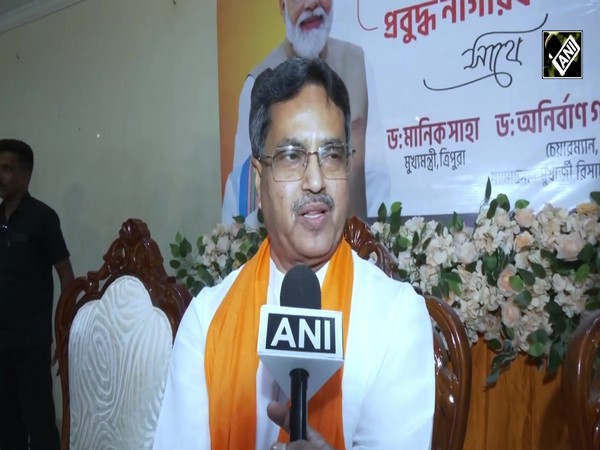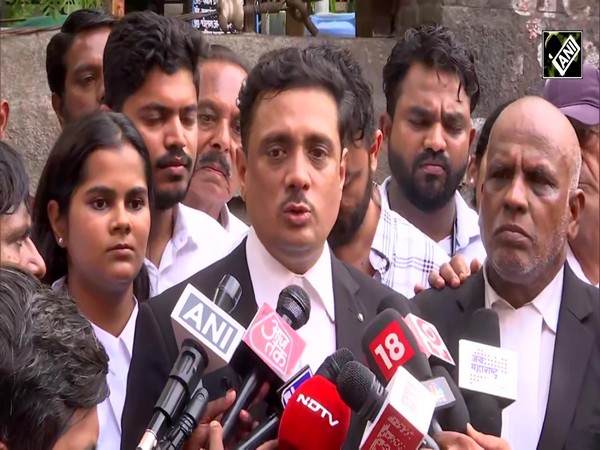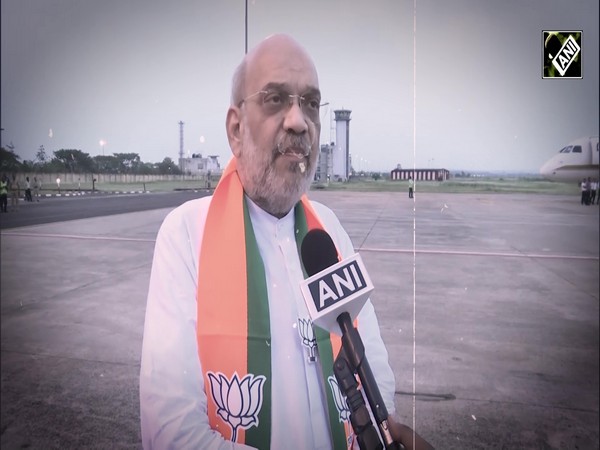Devotees celebrate Gai Jatra in Kathmandu for the salvation of departed souls
Aug 23, 2021

Kathmandu [Nepal], August 23 : Amid the COVID-19 pandemic, the Basantapur Durbar Square on Monday was packed with devotees who came to take part in Gai Jatra, which people believe will give salvation to the souls of their departed loved ones.
This festival of cows commonly called "Gai Jatra" or the "Cow Festival" falls on the first day of the waning moon in the month of Bhadra (Bhadra Sukla Pratipada) the fifth month of the Lunar calendar. It is mostly observed by Newari and Tharu communities of Nepal.
In the time-honoured tradition, people of all ages in the guise of cows and lunatics go around the city, wearing odd costumes to commemorate those who died during the past year. Bereaved families offer fruits, bread, beaten rice, curd, and money to those participating in the procession including the cows.
"From every family which has lost a dear one in the past one year, a cow is taken out and prayers offered for the peace of departed soul. It has been one year that I lost my mother and I am out with a cow praying for the peace of her departed soul," Arun Budhathoki, one of the bereaved family members told ANI.
It is believed that the festival derives its name from the religious belief that the deceased, during their journey to heaven, cross a legendary river by grabbing the tail of a cow.
The tails of cows demonstrated today is also credited for helping the deceased one to get across Baitarni, a legendary river to get into heaven. The persons who are in the attire of a cow also have an artificial tail which has the same purpose.
The Garuda Purana, a Hindu scripture, mentions that on the 11th day of death rites, people have to perform "Brishotsarga", release an ox/bull, with a belief that it would give peace to the deceased soul.
As this would be costly, some historians claims Gai Jatra is celebrated as an alternative to it on the day of Bhadra Krishna Pratipada and has since been celebrated. While some of manuscript mentions that the festival started as 'saa yaa(t)' or 'gai yatra' meaning 'journey of the cow' during the time of Jayasthiti Malla, around 600 years ago.
But, it was during reign of Pratap Malla in Kathmandu, Jagat Prakash Malla in Bhaktapur and Siddhi Narsingh Malla in Lalitpur that the Gai Jatra turned into a pilgrimage and a festival, with musical instruments.
It also has been claimed that festival which is now marked actually to be Gai Yatra during medieval period became Gai Jatra due to aberration. Earlier, the funeral rites were completed after people roamed the city with a cow, then musical instruments were also added.
The person who takes part in this brief pilgrimage of cow praying for salvation of departed souls should eat clean food and maintain hygiene of high level.
"I bathe early in the morning and haven't eaten anything till now. Following the traditions I am out in the road with the cow going from one locality to other and round the city. After completing my ritual for the day and upon my return home, I again would need to take a bath and eat items that are considered pure," Budhathoki said.
The ancient tradition which still is practiced in present time is credited to have started from 500 Nepal Sambat (popular amongst the Newari Community of Nepal). Historians have claimed that people used to glorify the deeds of the deceased ones through songs and hymns in order to inform and encourage others.
This festival is also marked with the mockery of the wrong-doings of politicos and other concerned groups through the means of drama, music and other means.




















